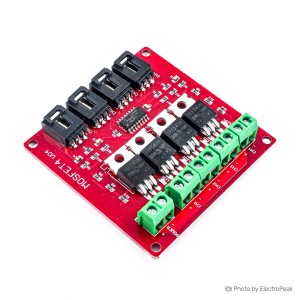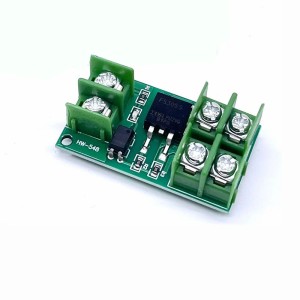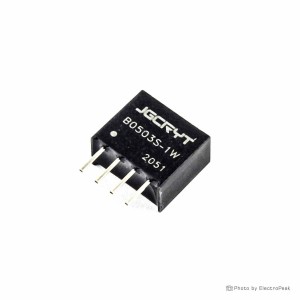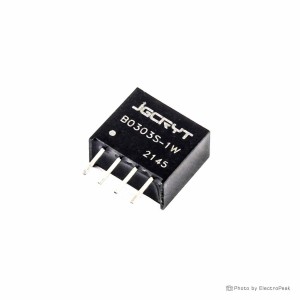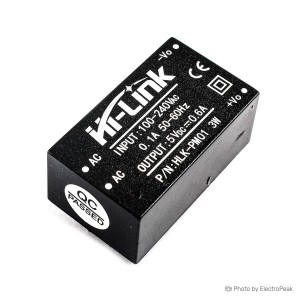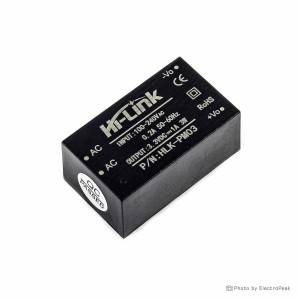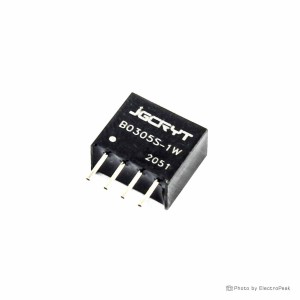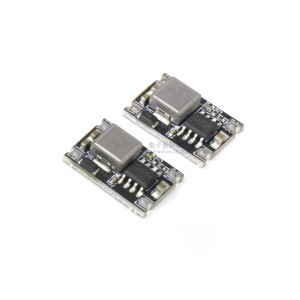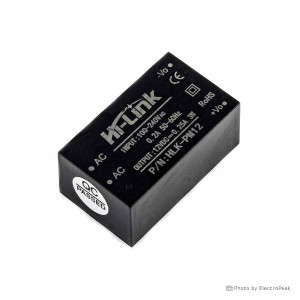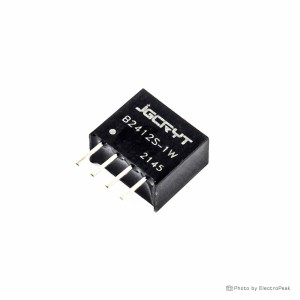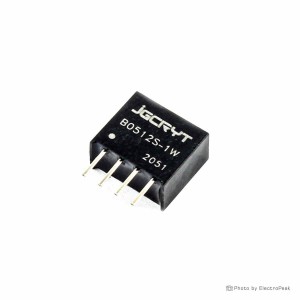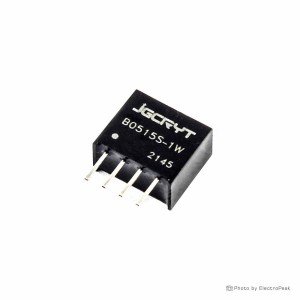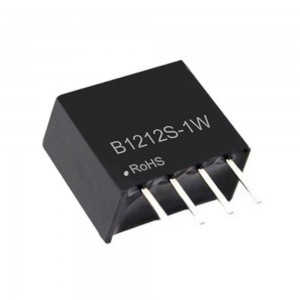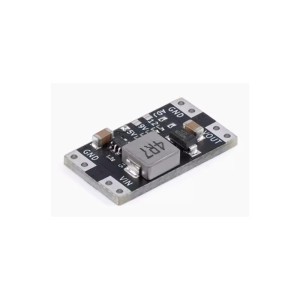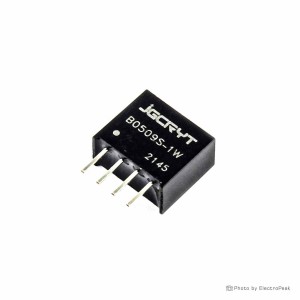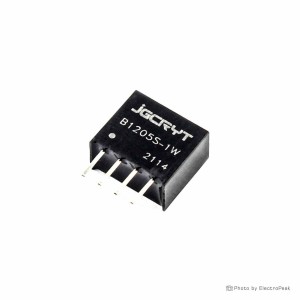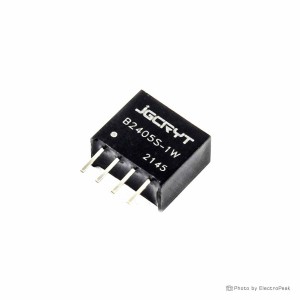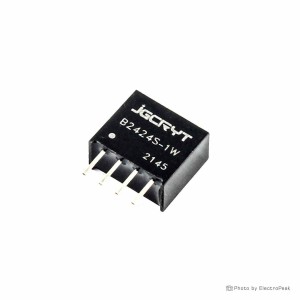Galvanic isolation in power isolation modules serves as a crucial safety feature by creating an electrical separation between input and output circuits. This prevents the direct flow of current, protecting sensitive components and users from potential hazards. It minimizes the risk of electrical shocks, enhances circuit reliability, and ensures safe operation in various applications.
Power Isolation Modules
Power Isolation Modules
Power isolation modules play a crucial role in electronic circuits by providing galvanic isolation, ensuring that the input and output sides of a power supply are electrically separated. This isolation prevents potential damage, enhances safety, and reduces the risk of electrical noise interference. These power isolation modules come in various configurations to cater to different voltage and current requirements, making them essential components in electronic designs where isolation is imperative for reliability and safety.
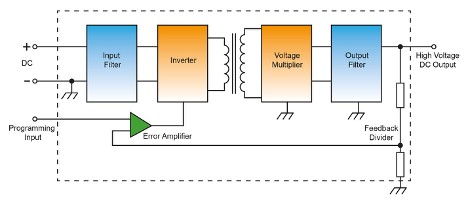
Price of Power Isolation Modules:
The price of power isolation modules varies based on factors such as the brand, model, and specifications. Models with higher power ratings or additional features may have a higher price point. When considering a power isolation module, it's crucial to assess the specific needs of the application, including input and output voltage requirements, current capacity, and isolation voltage. By understanding the project requirements, users can make an informed decision on the most suitable power isolation module that balances performance with cost-effectiveness.
Tips for Buying Power Isolation Modules:
When purchasing power isolation modules, key considerations include the required isolation voltage, input and output voltage compatibility, current capacity, and the specific application's safety standards. Check the datasheets for detailed specifications and ensure that the chosen module meets or exceeds the project's requirements. Additionally, factors like size, ease of integration, and available certifications should be taken into account. Reading user reviews and seeking recommendations within the electronics community can provide valuable insights into the reliability and performance of power isolation modules from different brands.
Popular Models of Isolation Modules:
Jgcryt Isolation Modules: Jgcryt isolation modules stand as robust guardians in the realm of electronic components, ensuring the safety and reliability of diverse circuits. These modules, available in various models such as B0303S, B0505S, and B1205S, provide essential galvanic isolation, safeguarding sensitive devices from potential harm. With an unwavering commitment to efficiency, Jgcryt's B-series models offer a spectrum of choices, catering to different power capacities and application needs. The modules boast compact designs, seamlessly integrating into space-constrained electronic setups.
HLK-PM01 (In: 100-240V AC, Out: 5V DC 3W): The HLK-PM01 by Hi-Link is a versatile power isolation module that efficiently converts a wide range of input voltages, from 100V to 240V AC, to a stable 5V DC output with a power rating of 3W. This adaptability ensures compatibility with various power sources, making it an ideal solution for a diverse array of electronic projects. The module's compact design and galvanic isolation provide a secure electrical barrier, contributing to enhanced circuit safety and reliability.
HLK-PM03 (In: 100-240V AC, Out: 3.3V DC 3W): Engineered for flexibility, the HLK-PM03 power isolation module from Hi-Link accepts input voltages ranging from 100V to 240V AC and delivers a precise 3.3V DC output with a power rating of 3W. This wide input voltage range accommodates different power environments, making it a versatile choice for electronic applications with varying voltage specifications. The module's reliable galvanic isolation enhances circuit protection, ensuring a secure electrical barrier for increased safety.
HLK-PM12 (In: 100-240V AC, Out: 12V DC 3W): Meeting higher power demands, the HLK-PM12 model from Hi-Link offers a broad input voltage range of 100V to 240V AC, converting it to a stable 12V DC output with a power rating of 3W. This power isolation module ensures secure galvanic isolation, making it well-suited for projects with elevated power requirements. The wide input voltage compatibility enhances its versatility, while the compact design and galvanic isolation contribute to reliable circuit protection.
How does galvanic isolation in power isolation modules contribute to circuit safety?
Can power isolation modules be used in both AC and DC circuits?
Yes, many power isolation modules are designed to work in both AC and DC circuits. It is essential to verify the module's specifications to confirm its compatibility with the intended circuit type, ensuring seamless integration into diverse electronic systems.
Are there additional safety measures required when integrating power isolation modules into electronic systems?
While power isolation modules enhance circuit safety, additional safety measures may be necessary, depending on the application. Proper grounding, adequate insulation, and adherence to safety guidelines are essential. Users should follow recommended practices outlined in module documentation to ensure a comprehensive safety approach.
Can power isolation modules protect sensitive electronic components from voltage spikes or surges?
Yes, power isolation modules can protect sensitive electronic components from voltage spikes or surges. The galvanic isolation they provide acts as a barrier, preventing the propagation of voltage fluctuations and safeguarding connected components from potential damage.
What role do power isolation modules play in minimizing electromagnetic interference (EMI) in electronic circuits?
Power isolation modules play a crucial role in minimizing electromagnetic interference (EMI) by preventing direct electrical contact between input and output circuits. This isolation reduces the likelihood of EMI transmission, ensuring electromagnetic compatibility and preventing interference with other electronic devices.
What considerations should be taken into account when designing PCB layouts for optimal performance of power isolation modules?
Designing PCB layouts for optimal performance of power isolation modules involves considerations such as proper component placement, signal integrity, and adherence to manufacturer guidelines. Minimizing signal crosstalk and ensuring adequate clearance between high-voltage and low-voltage components contribute to the effective integration of power isolation modules into PCB designs
